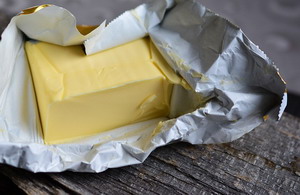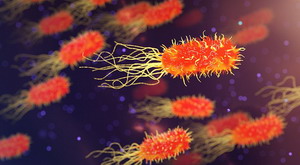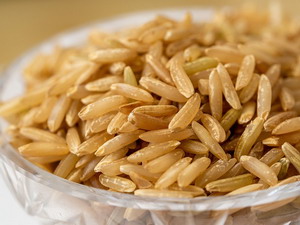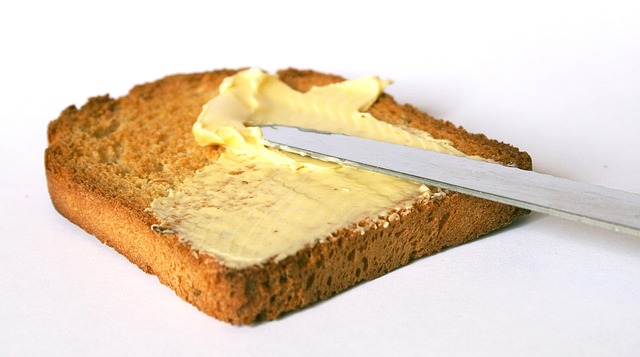 For a couple of months now I have been researching the inflammatory properties of the fats we consume. I thought I had a pretty good handle on the subject before I started my research this time due to a dive into the subject I made about 20 years ago. Back then the exciting knowledge was all focused on the effects of certain fatty acids that fed into the chemical pathways that directly produce inflammation. The word was that seed oils high in omega-6 linoleic acid turned into arachidonic acid which then turned into the pain-causing chemicals known as prostaglandins. This pathway is what aspirin and other over-the-counter medications for pain interrupt, thus stopping the pain. The pathways were well known and the idea back then was to eliminate the seed oils (safflower, corn, soybean, etc.) from the diet to reduce pain and inflammation. Along with this tactic was to increase omega 3 oils from fish to counter the impact of the omega 6 oils.
For a couple of months now I have been researching the inflammatory properties of the fats we consume. I thought I had a pretty good handle on the subject before I started my research this time due to a dive into the subject I made about 20 years ago. Back then the exciting knowledge was all focused on the effects of certain fatty acids that fed into the chemical pathways that directly produce inflammation. The word was that seed oils high in omega-6 linoleic acid turned into arachidonic acid which then turned into the pain-causing chemicals known as prostaglandins. This pathway is what aspirin and other over-the-counter medications for pain interrupt, thus stopping the pain. The pathways were well known and the idea back then was to eliminate the seed oils (safflower, corn, soybean, etc.) from the diet to reduce pain and inflammation. Along with this tactic was to increase omega 3 oils from fish to counter the impact of the omega 6 oils.
 This was all new stuff 20 years ago, and it launched the fish oil capsule boom. A few years later the news media was all over the big story that butter was an okay food. Since 1977 the government had been telling everyone to avoid saturated fat as it would clog up your arteries and cause heart disease. The whole country was giving lip service to moving toward eating a low-fat diet. Since that time a lot more research has been done showing us that the reality of heart disease is much more complex than we thought. Our arteries are not kitchen sink drains that get clogged up just because we pour the bacon grease down the drain. Heart disease and atherosclerosis are the result of many many years of inflammation damaging the arteries and heart. The fat deposits seen in an autopsy are just part of the last phase of this inflammatory process.
This was all new stuff 20 years ago, and it launched the fish oil capsule boom. A few years later the news media was all over the big story that butter was an okay food. Since 1977 the government had been telling everyone to avoid saturated fat as it would clog up your arteries and cause heart disease. The whole country was giving lip service to moving toward eating a low-fat diet. Since that time a lot more research has been done showing us that the reality of heart disease is much more complex than we thought. Our arteries are not kitchen sink drains that get clogged up just because we pour the bacon grease down the drain. Heart disease and atherosclerosis are the result of many many years of inflammation damaging the arteries and heart. The fat deposits seen in an autopsy are just part of the last phase of this inflammatory process.
 Personally, I have been following a ketogenic lifestyle just about since I gave up being a vegetarian while in Chiropractic school. Although I was a very good vegetarian and balanced my food choices to ensure my protein levels were maximized, I still got very sick. Vegetarianism did not work for me. For my body, it was simply too many carbs. I ended up with tremendous hypoglycemia that would regularly knock me out. So I switched to the other end of the spectrum and went with a low-carb lifestyle. This worked for me pretty much. It kept me healthy, but it didn’t address my excess weight. I have been fighting excess weight since I was seven years old, and the only thing that has ever worked to get the pounds off of me is water fasting. At one point in college, I was fasting 120 days out of the year through regular 36-hour, 5-day, and 2-week fasts.
Personally, I have been following a ketogenic lifestyle just about since I gave up being a vegetarian while in Chiropractic school. Although I was a very good vegetarian and balanced my food choices to ensure my protein levels were maximized, I still got very sick. Vegetarianism did not work for me. For my body, it was simply too many carbs. I ended up with tremendous hypoglycemia that would regularly knock me out. So I switched to the other end of the spectrum and went with a low-carb lifestyle. This worked for me pretty much. It kept me healthy, but it didn’t address my excess weight. I have been fighting excess weight since I was seven years old, and the only thing that has ever worked to get the pounds off of me is water fasting. At one point in college, I was fasting 120 days out of the year through regular 36-hour, 5-day, and 2-week fasts.
 Those of you who also live a low-carb lifestyle know that fats are an essential part of such a lifestyle. So I have always kept an eye out for new research on stuff that affects my diet and health. Well, a few months back I came across some data suggesting that saturated fats served to carry extremely inflammatory lipopolysaccharides from bacteria through the gut wall and into the bloodstream. This is bad news for someone who loves butter. My dear friend butter was innocently being used by bacteria to poison my body! Dastardly bacteria! This put me on a new search to learn more about the impact of fats on health. What I found was totally confusing. The old school fat is evil and causes heart disease people are fighting with the fat is good and carbs are bad folks. Both sides of this argument have piles of studies to prove their side. Who do you believe?
Those of you who also live a low-carb lifestyle know that fats are an essential part of such a lifestyle. So I have always kept an eye out for new research on stuff that affects my diet and health. Well, a few months back I came across some data suggesting that saturated fats served to carry extremely inflammatory lipopolysaccharides from bacteria through the gut wall and into the bloodstream. This is bad news for someone who loves butter. My dear friend butter was innocently being used by bacteria to poison my body! Dastardly bacteria! This put me on a new search to learn more about the impact of fats on health. What I found was totally confusing. The old school fat is evil and causes heart disease people are fighting with the fat is good and carbs are bad folks. Both sides of this argument have piles of studies to prove their side. Who do you believe?
 Recently I came across a couple of great video lectures on YouTube that helped me to sort out this mess of information. There is a ton of data now showing huge benefits to diabetics and the population in general in regulating blood sugar through a low-carb diet. The biggest impact you can have presently on dementia/Alzheimer’s is with a low-carb diet being used to switch the brain over to using ketones for energy instead of sugar. Low-carb is even the route of choice for many different cancer treatments. However, many long-term voices in the low-carb community have been noticing that even though their blood sugar is well controlled, it does not go down to actual healthy levels. While it should be down in the 70 to 80 range, on low-carb diet it usually hangs around in the 90s somewhere. Some folks who have done a great job of getting really healthy, strong, and trim are finding that including fruit and honey in their diets has brought their blood sugar down into the healthy range. Fruit and honey completely blow them out of the low-carb metabolism place. Yet it is working.
Recently I came across a couple of great video lectures on YouTube that helped me to sort out this mess of information. There is a ton of data now showing huge benefits to diabetics and the population in general in regulating blood sugar through a low-carb diet. The biggest impact you can have presently on dementia/Alzheimer’s is with a low-carb diet being used to switch the brain over to using ketones for energy instead of sugar. Low-carb is even the route of choice for many different cancer treatments. However, many long-term voices in the low-carb community have been noticing that even though their blood sugar is well controlled, it does not go down to actual healthy levels. While it should be down in the 70 to 80 range, on low-carb diet it usually hangs around in the 90s somewhere. Some folks who have done a great job of getting really healthy, strong, and trim are finding that including fruit and honey in their diets has brought their blood sugar down into the healthy range. Fruit and honey completely blow them out of the low-carb metabolism place. Yet it is working.
 One of the videos that totally blew my mind was talking about some interesting diet research back in the late 30s and early 40s designed to treat kidney disease and hypertension. It was called the Rice Diet because all you ate was rice, fruit, and white sugar. It was tremendously successful at treating kidney issues and hypertension. However, a side effect was the observation that it was reversing the patient’s diabetes and heart disease. Many of the kidney patients also had these conditions. This diet was 93% carbohydrates! It was designed to be a diet devoid of fat, salt, and protein. How could a diet that was almost entirely sugar heal diabetes? That is the big question and is where the first start to the low-fat diet recommendations came from. Yet all the research since the dietary low-fat recommendation put out back in 1977 has shown that the low-fat diets have not worked to help with heart disease or diabetes. We as a nation have gotten fatter and fatter since that time and heart disease and diabetes have become epidemic. What is going on?
One of the videos that totally blew my mind was talking about some interesting diet research back in the late 30s and early 40s designed to treat kidney disease and hypertension. It was called the Rice Diet because all you ate was rice, fruit, and white sugar. It was tremendously successful at treating kidney issues and hypertension. However, a side effect was the observation that it was reversing the patient’s diabetes and heart disease. Many of the kidney patients also had these conditions. This diet was 93% carbohydrates! It was designed to be a diet devoid of fat, salt, and protein. How could a diet that was almost entirely sugar heal diabetes? That is the big question and is where the first start to the low-fat diet recommendations came from. Yet all the research since the dietary low-fat recommendation put out back in 1977 has shown that the low-fat diets have not worked to help with heart disease or diabetes. We as a nation have gotten fatter and fatter since that time and heart disease and diabetes have become epidemic. What is going on?
 The devil is in the details. Those early studies with a low-fat diet producing such amazing results were using a diet that only had 1 to 2% of the total calories coming from fats. Subsequent research discovered that the negative impact of fat on health is not in a model we relate to in medicine — the s-curve. We think in terms of “if a little is bad then the more we add, the worse things get.” But fat does not work that way. From zero to about 10% of your total calories as fat has almost no effect on your health. Then suddenly from 10% to 12%, it jumps up to a high level of impact and then levels out at that high level. It is extremely hard to get your fat consumption down to the levels necessary to produce fantastic health results. So the government decided to redefine what a low-fat diet meant by saying that low-fat is anything below 30% fat. Remember, I said that anything over 12% is maximum bad. This means that all the research since 1977 done with this new definition of low-fat is in fact testing a moderate to high-fat diet. You can’t get anyone to volunteer to do a real low-fat diet. Patients had to be on death’s door with failing kidneys before they would stick to such a thing. Even then some of them did not stick to the Rice diet and they all died fairly quickly.
The devil is in the details. Those early studies with a low-fat diet producing such amazing results were using a diet that only had 1 to 2% of the total calories coming from fats. Subsequent research discovered that the negative impact of fat on health is not in a model we relate to in medicine — the s-curve. We think in terms of “if a little is bad then the more we add, the worse things get.” But fat does not work that way. From zero to about 10% of your total calories as fat has almost no effect on your health. Then suddenly from 10% to 12%, it jumps up to a high level of impact and then levels out at that high level. It is extremely hard to get your fat consumption down to the levels necessary to produce fantastic health results. So the government decided to redefine what a low-fat diet meant by saying that low-fat is anything below 30% fat. Remember, I said that anything over 12% is maximum bad. This means that all the research since 1977 done with this new definition of low-fat is in fact testing a moderate to high-fat diet. You can’t get anyone to volunteer to do a real low-fat diet. Patients had to be on death’s door with failing kidneys before they would stick to such a thing. Even then some of them did not stick to the Rice diet and they all died fairly quickly.
 All this information dovetails nicely into some new biochemistry I learned a couple of months ago called the Randle Cycle. In super simple terms, it says that cells can only handle either fat or sugar for energy, not both. Whichever is the most present in the cell triggers the cell to block the entrance of the other. Too much fat around blocks the metabolism of sugar giving you high blood sugar, and too much sugar blocks the utilization of fats for energy (which every keto low-carb person has experienced.) Essentially if you eat only carbs/sugars, your body operates just fine and can heal itself. If you eat only fats for energy and avoid carbs, your body also does just fine. The problem is that almost all of us eat somewhere in between and that is mucking up our health. Sourdough French bread with butter on it used to be my favorite food many years ago. I still miss it. But there you have it, eating carbs and fat together.
All this information dovetails nicely into some new biochemistry I learned a couple of months ago called the Randle Cycle. In super simple terms, it says that cells can only handle either fat or sugar for energy, not both. Whichever is the most present in the cell triggers the cell to block the entrance of the other. Too much fat around blocks the metabolism of sugar giving you high blood sugar, and too much sugar blocks the utilization of fats for energy (which every keto low-carb person has experienced.) Essentially if you eat only carbs/sugars, your body operates just fine and can heal itself. If you eat only fats for energy and avoid carbs, your body also does just fine. The problem is that almost all of us eat somewhere in between and that is mucking up our health. Sourdough French bread with butter on it used to be my favorite food many years ago. I still miss it. But there you have it, eating carbs and fat together.
 I think that this may explain why I got so sick after 2 years as a vegetarian. I was still consuming various vegetable fats as a vegetarian. Since I was young and had a strong pancreas, when the Randle cycle in my cells said I had too much fat it triggered high blood sugar by blocking its entrance into the cells, which my body responded to by dumping a bigger load of insulin and driving my blood sugar into the basement.
I think that this may explain why I got so sick after 2 years as a vegetarian. I was still consuming various vegetable fats as a vegetarian. Since I was young and had a strong pancreas, when the Randle cycle in my cells said I had too much fat it triggered high blood sugar by blocking its entrance into the cells, which my body responded to by dumping a bigger load of insulin and driving my blood sugar into the basement.
 Ellen and I will be experimenting with the Rice Diet in the next few months to see if we can reverse the little bit of stubborn insulin resistance we still have despite our ketogenic lifestyle.
Ellen and I will be experimenting with the Rice Diet in the next few months to see if we can reverse the little bit of stubborn insulin resistance we still have despite our ketogenic lifestyle.
Take care,
David
 Ellen
Ellen
Last week I mentioned how we are trying to eat purple sweet potatoes to shift our gut bug microbiome towards happier more friendly gut bugs. The purple pigment in the sweet potatoes is what does this. This last week we are looking seriously at trying out the Rice diet for a while to see what it does. This kicked up a curiosity about black rice – is it black because of the same purple pigment? The answer is yes! So I found an organic source grown in northern Italy. Ellen is in love already even though we have not tried our first batch.
 Inverse vaccine for autoimmunity?
Inverse vaccine for autoimmunity?
 Simple blood test discovered for chronic fatigue syndrome
Simple blood test discovered for chronic fatigue syndrome
 Covid patients exhale 1000 viruses/min
Covid patients exhale 1000 viruses/min

 For a couple of months now I have been researching the inflammatory properties of the fats we consume. I thought I had a pretty good handle on the subject before I started my research this time due to a dive into the subject I made about 20 years ago. Back then the exciting knowledge was all focused on the effects of certain fatty acids that fed into the chemical pathways that directly produce inflammation. The word was that seed oils high in omega-6 linoleic acid turned into arachidonic acid which then turned into the pain-causing chemicals known as prostaglandins. This pathway is what aspirin and other over-the-counter medications for pain interrupt, thus stopping the pain. The pathways were well known and the idea back then was to eliminate the seed oils (safflower, corn, soybean, etc.) from the diet to reduce pain and inflammation. Along with this tactic was to increase omega 3 oils from fish to counter the impact of the omega 6 oils.
For a couple of months now I have been researching the inflammatory properties of the fats we consume. I thought I had a pretty good handle on the subject before I started my research this time due to a dive into the subject I made about 20 years ago. Back then the exciting knowledge was all focused on the effects of certain fatty acids that fed into the chemical pathways that directly produce inflammation. The word was that seed oils high in omega-6 linoleic acid turned into arachidonic acid which then turned into the pain-causing chemicals known as prostaglandins. This pathway is what aspirin and other over-the-counter medications for pain interrupt, thus stopping the pain. The pathways were well known and the idea back then was to eliminate the seed oils (safflower, corn, soybean, etc.) from the diet to reduce pain and inflammation. Along with this tactic was to increase omega 3 oils from fish to counter the impact of the omega 6 oils. This was all new stuff 20 years ago, and it launched the fish oil capsule boom. A few years later the news media was all over the big story that butter was an okay food. Since 1977 the government had been telling everyone to avoid saturated fat as it would clog up your arteries and cause heart disease. The whole country was giving lip service to moving toward eating a low-fat diet. Since that time a lot more research has been done showing us that the reality of heart disease is much more complex than we thought. Our arteries are not kitchen sink drains that get clogged up just because we pour the bacon grease down the drain. Heart disease and atherosclerosis are the result of many many years of inflammation damaging the arteries and heart. The fat deposits seen in an autopsy are just part of the last phase of this inflammatory process.
This was all new stuff 20 years ago, and it launched the fish oil capsule boom. A few years later the news media was all over the big story that butter was an okay food. Since 1977 the government had been telling everyone to avoid saturated fat as it would clog up your arteries and cause heart disease. The whole country was giving lip service to moving toward eating a low-fat diet. Since that time a lot more research has been done showing us that the reality of heart disease is much more complex than we thought. Our arteries are not kitchen sink drains that get clogged up just because we pour the bacon grease down the drain. Heart disease and atherosclerosis are the result of many many years of inflammation damaging the arteries and heart. The fat deposits seen in an autopsy are just part of the last phase of this inflammatory process. Personally, I have been following a ketogenic lifestyle just about since I gave up being a vegetarian while in Chiropractic school. Although I was a very good vegetarian and balanced my food choices to ensure my protein levels were maximized, I still got very sick. Vegetarianism did not work for me. For my body, it was simply too many carbs. I ended up with tremendous hypoglycemia that would regularly knock me out. So I switched to the other end of the spectrum and went with a low-carb lifestyle. This worked for me pretty much. It kept me healthy, but it didn’t address my excess weight. I have been fighting excess weight since I was seven years old, and the only thing that has ever worked to get the pounds off of me is water fasting. At one point in college, I was fasting 120 days out of the year through regular 36-hour, 5-day, and 2-week fasts.
Personally, I have been following a ketogenic lifestyle just about since I gave up being a vegetarian while in Chiropractic school. Although I was a very good vegetarian and balanced my food choices to ensure my protein levels were maximized, I still got very sick. Vegetarianism did not work for me. For my body, it was simply too many carbs. I ended up with tremendous hypoglycemia that would regularly knock me out. So I switched to the other end of the spectrum and went with a low-carb lifestyle. This worked for me pretty much. It kept me healthy, but it didn’t address my excess weight. I have been fighting excess weight since I was seven years old, and the only thing that has ever worked to get the pounds off of me is water fasting. At one point in college, I was fasting 120 days out of the year through regular 36-hour, 5-day, and 2-week fasts. Those of you who also live a low-carb lifestyle know that fats are an essential part of such a lifestyle. So I have always kept an eye out for new research on stuff that affects my diet and health. Well, a few months back I came across some data suggesting that saturated fats served to carry extremely inflammatory lipopolysaccharides from bacteria through the gut wall and into the bloodstream. This is bad news for someone who loves butter. My dear friend butter was innocently being used by bacteria to poison my body! Dastardly bacteria! This put me on a new search to learn more about the impact of fats on health. What I found was totally confusing. The old school fat is evil and causes heart disease people are fighting with the fat is good and carbs are bad folks. Both sides of this argument have piles of studies to prove their side. Who do you believe?
Those of you who also live a low-carb lifestyle know that fats are an essential part of such a lifestyle. So I have always kept an eye out for new research on stuff that affects my diet and health. Well, a few months back I came across some data suggesting that saturated fats served to carry extremely inflammatory lipopolysaccharides from bacteria through the gut wall and into the bloodstream. This is bad news for someone who loves butter. My dear friend butter was innocently being used by bacteria to poison my body! Dastardly bacteria! This put me on a new search to learn more about the impact of fats on health. What I found was totally confusing. The old school fat is evil and causes heart disease people are fighting with the fat is good and carbs are bad folks. Both sides of this argument have piles of studies to prove their side. Who do you believe? Recently I came across a couple of great video lectures on YouTube that helped me to sort out this mess of information. There is a ton of data now showing huge benefits to diabetics and the population in general in regulating blood sugar through a low-carb diet. The biggest impact you can have presently on dementia/Alzheimer’s is with a low-carb diet being used to switch the brain over to using ketones for energy instead of sugar. Low-carb is even the route of choice for many different cancer treatments. However, many long-term voices in the low-carb community have been noticing that even though their blood sugar is well controlled, it does not go down to actual healthy levels. While it should be down in the 70 to 80 range, on low-carb diet it usually hangs around in the 90s somewhere. Some folks who have done a great job of getting really healthy, strong, and trim are finding that including fruit and honey in their diets has brought their blood sugar down into the healthy range. Fruit and honey completely blow them out of the low-carb metabolism place. Yet it is working.
Recently I came across a couple of great video lectures on YouTube that helped me to sort out this mess of information. There is a ton of data now showing huge benefits to diabetics and the population in general in regulating blood sugar through a low-carb diet. The biggest impact you can have presently on dementia/Alzheimer’s is with a low-carb diet being used to switch the brain over to using ketones for energy instead of sugar. Low-carb is even the route of choice for many different cancer treatments. However, many long-term voices in the low-carb community have been noticing that even though their blood sugar is well controlled, it does not go down to actual healthy levels. While it should be down in the 70 to 80 range, on low-carb diet it usually hangs around in the 90s somewhere. Some folks who have done a great job of getting really healthy, strong, and trim are finding that including fruit and honey in their diets has brought their blood sugar down into the healthy range. Fruit and honey completely blow them out of the low-carb metabolism place. Yet it is working. One of
One of  The devil is in the details. Those early studies with a low-fat diet producing such amazing results were using a diet that only had 1 to 2% of the total calories coming from fats. Subsequent research discovered that the negative impact of fat on health is not in a model we relate to in medicine — the s-curve. We think in terms of “if a little is bad then the more we add, the worse things get.” But fat does not work that way. From zero to about 10% of your total calories as fat has almost no effect on your health. Then suddenly from 10% to 12%, it jumps up to a high level of impact and then levels out at that high level. It is extremely hard to get your fat consumption down to the levels necessary to produce fantastic health results. So the government decided to redefine what a low-fat diet meant by saying that low-fat is anything below 30% fat. Remember, I said that anything over 12% is maximum bad. This means that all the research since 1977 done with this new definition of low-fat is in fact testing a moderate to high-fat diet. You can’t get anyone to volunteer to do a real low-fat diet. Patients had to be on death’s door with failing kidneys before they would stick to such a thing. Even then some of them did not stick to the Rice diet and they all died fairly quickly.
The devil is in the details. Those early studies with a low-fat diet producing such amazing results were using a diet that only had 1 to 2% of the total calories coming from fats. Subsequent research discovered that the negative impact of fat on health is not in a model we relate to in medicine — the s-curve. We think in terms of “if a little is bad then the more we add, the worse things get.” But fat does not work that way. From zero to about 10% of your total calories as fat has almost no effect on your health. Then suddenly from 10% to 12%, it jumps up to a high level of impact and then levels out at that high level. It is extremely hard to get your fat consumption down to the levels necessary to produce fantastic health results. So the government decided to redefine what a low-fat diet meant by saying that low-fat is anything below 30% fat. Remember, I said that anything over 12% is maximum bad. This means that all the research since 1977 done with this new definition of low-fat is in fact testing a moderate to high-fat diet. You can’t get anyone to volunteer to do a real low-fat diet. Patients had to be on death’s door with failing kidneys before they would stick to such a thing. Even then some of them did not stick to the Rice diet and they all died fairly quickly. All this information dovetails nicely into some new biochemistry I learned a couple of months ago called the Randle Cycle. In super simple terms, it says that cells can only handle either fat or sugar for energy, not both. Whichever is the most present in the cell triggers the cell to block the entrance of the other. Too much fat around blocks the metabolism of sugar giving you high blood sugar, and too much sugar blocks the utilization of fats for energy (which every keto low-carb person has experienced.) Essentially if you eat only carbs/sugars, your body operates just fine and can heal itself. If you eat only fats for energy and avoid carbs, your body also does just fine. The problem is that almost all of us eat somewhere in between and that is mucking up our health. Sourdough French bread with butter on it used to be my favorite food many years ago. I still miss it. But there you have it, eating carbs and fat together.
All this information dovetails nicely into some new biochemistry I learned a couple of months ago called the Randle Cycle. In super simple terms, it says that cells can only handle either fat or sugar for energy, not both. Whichever is the most present in the cell triggers the cell to block the entrance of the other. Too much fat around blocks the metabolism of sugar giving you high blood sugar, and too much sugar blocks the utilization of fats for energy (which every keto low-carb person has experienced.) Essentially if you eat only carbs/sugars, your body operates just fine and can heal itself. If you eat only fats for energy and avoid carbs, your body also does just fine. The problem is that almost all of us eat somewhere in between and that is mucking up our health. Sourdough French bread with butter on it used to be my favorite food many years ago. I still miss it. But there you have it, eating carbs and fat together. I think that this may explain why I got so sick after 2 years as a vegetarian. I was still consuming various vegetable fats as a vegetarian. Since I was young and had a strong pancreas, when the Randle cycle in my cells said I had too much fat it triggered high blood sugar by blocking its entrance into the cells, which my body responded to by dumping a bigger load of insulin and driving my blood sugar into the basement.
I think that this may explain why I got so sick after 2 years as a vegetarian. I was still consuming various vegetable fats as a vegetarian. Since I was young and had a strong pancreas, when the Randle cycle in my cells said I had too much fat it triggered high blood sugar by blocking its entrance into the cells, which my body responded to by dumping a bigger load of insulin and driving my blood sugar into the basement. Ellen and I will be experimenting with the Rice Diet in the next few months to see if we can reverse the little bit of stubborn insulin resistance we still have despite our ketogenic lifestyle.
Ellen and I will be experimenting with the Rice Diet in the next few months to see if we can reverse the little bit of stubborn insulin resistance we still have despite our ketogenic lifestyle. Ellen
Ellen